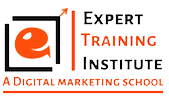Facebook Ads Not Converting? Check Out These 8 Surprising Reasons
Facebook Ads Not Converting? Check Out These 8 Surprising Reasons
So, here you are. After long nights of strategizing, and all the hard work, your campaign is now ready to take off. You already have your target audience, checked and fixed the issues on your campaign, and all you have to do is just click publish and let the results come in.
But that didn’t happen. Your Facebook ad wasn’t shown to anyone. And then you ask yourself, “Why aren’t my Facebook ads delivering?” “Why am I not getting the impressions that I’m expecting?”
To help you get through the challenges of advertising on Facebook, here are eight surprising reasons your campaign isn’t working and what you can do about it.
Not Having Enough Audience Data
Different from Google Ads, Facebook Audiences lets you make judgment calls about your prospects and to do your research before creating a campaign.
Meaning, prospects don’t come to your ads. Instead, you’re the one who should come to them.
One of the mistakes business owners make is setting too narrow campaigns. It’s better to start with a broad awareness campaign that’s optimized with the lowest CPC available.
Meaning, you can start with a modest spend and a half a million impressions, then get valuable engagement data like ad clicks for example, and the types of people who are converting.
In case you are not that tech-savvy, you can look for Facebook advertising agencies for small businesses that can help you gather data. They may give you recommendations on how you can best allocate your advertising budget.
Targeting The Right Audience With a Wrong Message
Most marketers would define their ideal customer, make a persona, then target their ads accordingly.
But what is wrong here is that you’re targeting a cold audience. What you can do instead is to target the ones that are interested in you.
Who are these people?
- Your current customers.
- People who have responded to your lead magnet in the past.
- Your mailing list.
- People who have previously watched your videos or clicked on your ads.
- Users who have clicked your site or spent time on a particular page in your site.
Targeting the Right Audience With the Wrong Ad Type
You might have compelling video content on your Facebook Page or website, and users are gladly responding to it. You decided to retarget them with an ad. However, you placed a static photo in the ad or a click to the website ad.
You know that this particular type of audience has responded to your video once, so why didn’t you serve them with a video ad?
Slow Loading Landing Page
Just like your copy and website images, the speed of your landing page is also important. The longer it is for a landing page to load, the lower your conversions will be.
Take Google for example, by slowing their page for a mere four tenth of a second, they could potentially lose 8 million searches a day.
Even if your business is much slower than that, a slow-loading landing page can hurt your conversions. To deal with the problem, take a look at some of the things that cause your landing page to slowly load, and what you can do to deal with it.
- Reduce your images: Images are heavy, causing your site much longer to load.
- Decrease the file size of your images: You can either reduce the image’s quality or the dimensions of the image.
- Place all javascript below the tag: Javascripts are also heavy. To help alleviate the problem, place it at the bottom of the page, below the tag. This lets the server load the visual elements on your landing page first.
- Not having a clear call to action
You want your audience to get as much information as possible, talk to them about how great your company is, and why they should convert into customers.
The most common problem here is lacking a clear call-to-action. If one of your goals is to lead prospects to your site then you have to be clear. Once you send them to your site, make sure that it leads them to your intended goals.
Don’t confuse them with overly complicated ads that would tell them to sign up or visit your site. Go for an ad with a clear objective in mind and a CTA that converts your audience.
Not Segmenting Ad Campaigns
Your messaging and ad creative will only apply to particular segments of your audience. When you have ads that are driving in a lot of impressions yet relatively fewer clicks and conversions, then you need to implement A/B split testing.
You can experiment with:
- Your images
- Messaging
- Ad creative
- Audience segments
- Copy of your landing page
Making a separate audience that’s based on various conversion goals, as well as previous engagement that can help you make hyper-targeted messages.
Low Relevance Score of Facebook Ads
Facebook wants your ads to be relevant to your audience as much as possible. It’s rewarding advertisers who do so by showing their ads to a larger audience yet charging them less.
That’s why you need to aim for a large relevance score. To boost your relevance score, tighten your targeting, create clear call-to-actions, and use compelling images.
Lower ad frequencies also significantly help.
Not Testing Ads
Back then, ad testing before used to be a time-consuming process. However, split testing is now the norm, and the dynamic creative option is there so you can test out various combinations of descriptions, headlines, images, CTAs, and so on.
So there’s no excuse that you should be testing and then stop using the ones that aren’t working.
Facebook ads are challenging. But don’t give up just yet. The good news is, once you know the basics, then your Facebook ads do work!




